The City of Dreaming Books (15 page)
Read The City of Dreaming Books Online
Authors: Walter Moers

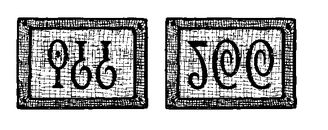
A hundred and twenty-seven, a hundred and twenty-eight . . .
I shivered, involuntarily reminded of a chapter in Regenschein’s book in which he had written of this district and its sinister history - and recounted the legend of the Darkman of Bookholm. This was where, centuries ago, the Bookemists had lived and largely controlled the destinies of the city. Bookemism was a Bookholmian species of alchemy. Part scientists, part physicians, part charlatans and part antiquarians, the Bookemists had founded a guild devoted to typography, antiquarianism, chemistry, biology, physics and literature. These branches of knowledge had combined with conjuration, divination, astrology and other hocus-pocus to form a baneful amalgam sufficient to fill whole libraries with horror stories.
I shivered, involuntarily reminded of a chapter in Regenschein’s book in which he had written of this district and its sinister history - and recounted the legend of the Darkman of Bookholm. This was where, centuries ago, the Bookemists had lived and largely controlled the destinies of the city. Bookemism was a Bookholmian species of alchemy. Part scientists, part physicians, part charlatans and part antiquarians, the Bookemists had founded a guild devoted to typography, antiquarianism, chemistry, biology, physics and literature. These branches of knowledge had combined with conjuration, divination, astrology and other hocus-pocus to form a baneful amalgam sufficient to fill whole libraries with horror stories.
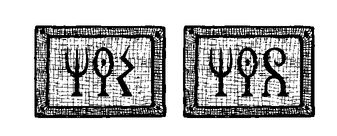
Two hundred and four, two hundred and five . . .
In these old buildings, bizarre attempts had been made - for whatever reason - to transform printer’s ink into blood and blood into printer’s ink. Indescribable scenes must have occurred when the Bookemists assembled in the narrow street under a full moon, there to celebrate the rites laid down in
The Twelve Thousand Precepts
and carry out their gruesome experiments on animals and other life forms. This was in the period after the Bookholmians had been driven from the catacombs by epidemics and natural disasters, a time when civilisation was just beginning to burgeon: a transitional phase midway between barbarism and the rule of law, sorcerous cults and genuine culture.
In these old buildings, bizarre attempts had been made - for whatever reason - to transform printer’s ink into blood and blood into printer’s ink. Indescribable scenes must have occurred when the Bookemists assembled in the narrow street under a full moon, there to celebrate the rites laid down in
The Twelve Thousand Precepts
and carry out their gruesome experiments on animals and other life forms. This was in the period after the Bookholmians had been driven from the catacombs by epidemics and natural disasters, a time when civilisation was just beginning to burgeon: a transitional phase midway between barbarism and the rule of law, sorcerous cults and genuine culture.
It was in Leyden Lane, one of the streets leading off Darkman Street, that the first Leyden Manikin had come into being. This was also where the Bookemists had bred cats with wings and even, so it was said, the living books known as Animatomes. They had pursued their frightful experiments in the megalomaniac belief that anything capable of being imagined and committed to paper could also be created in reality, with the result that the neighbourhood had long abounded in hybrid creatures so bizarre as to defy description.
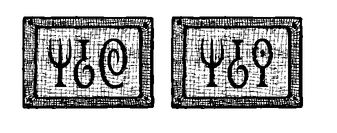
Two hundred and forty-eight, two hundred and forty-nine . . .
One day, according to Regenschein, the Bookemists had set out to create a giant, a huge paper colossus that would defend Bookholm against all its enemies. Having boiled up some books, mixed printer’s ink with herbs and performed various rituals, they fashioned a figure three times the height of a house out of pulped paper, minced animals and mashed peat from Dullsgard. This figure they steeped in printer’s ink to render its appearance even more frightful and christened ‘the Darkman’. Then, in a spirit of self-sacrifice, ten Bookemists had committed suicide so that it could be transfused with their blood.
One day, according to Regenschein, the Bookemists had set out to create a giant, a huge paper colossus that would defend Bookholm against all its enemies. Having boiled up some books, mixed printer’s ink with herbs and performed various rituals, they fashioned a figure three times the height of a house out of pulped paper, minced animals and mashed peat from Dullsgard. This figure they steeped in printer’s ink to render its appearance even more frightful and christened ‘the Darkman’. Then, in a spirit of self-sacrifice, ten Bookemists had committed suicide so that it could be transfused with their blood.
Last of all, the figure had an iron rod inserted in its head and was exposed to a thunderstorm with its feet immersed in two tubs of water. An immense shaft of lightning is said to have raced down the rod and brought the Darkman to life. He uttered a terrible cry and, with electrical charges flickering round him, stepped out of the water. The Bookemists cheered and hurled their conical hats into the air - until the Darkman bent down, grabbed one of them and swallowed him whole. Then he stalked through the city, snatching up screaming inhabitants at random and devouring them. He even ripped the roofs off houses, reached inside and gobbled up anything that moved.
Eventually, so the story ran, one courageous citizen of Bookholm set the Darkman on fire with a torch. But the blazing giant staggered off through the streets, bellowing with pain. The flames ignited house after house and street after street until he was finally reduced to a mound of grey ash. That was how Bookholm’s first great conflagration is said to have started.
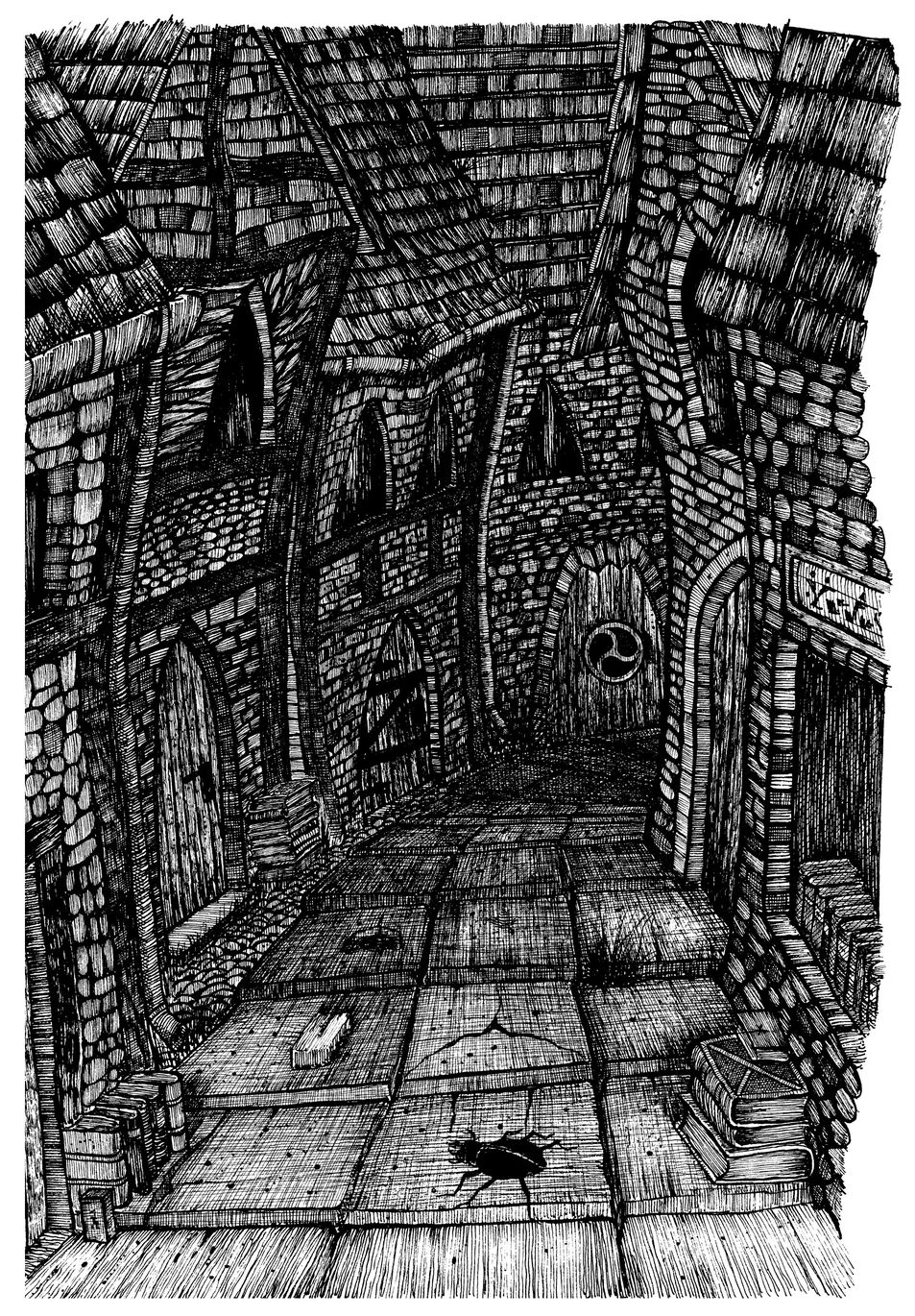

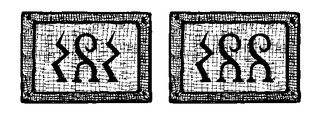
Three hundred, three hundred and one . . .
The real truth, in all probability, was that some scatterbrained antiquarian had knocked over an oil lamp and that this hair-raising horror story was a figment of the imagination centuries in the making.
The real truth, in all probability, was that some scatterbrained antiquarian had knocked over an oil lamp and that this hair-raising horror story was a figment of the imagination centuries in the making.

Three hundred and eleven, three hundred and twelve . . .
Nevertheless, that old wives’ tale seemed quite plausible to anyone who, like me, was tiptoeing through those coal-black ruins. If printer’s ink had ever been transformed into blood and paper into a living creature anywhere in Zamonia, it was here in the heart of this crazy city.
Nevertheless, that old wives’ tale seemed quite plausible to anyone who, like me, was tiptoeing through those coal-black ruins. If printer’s ink had ever been transformed into blood and paper into a living creature anywhere in Zamonia, it was here in the heart of this crazy city.
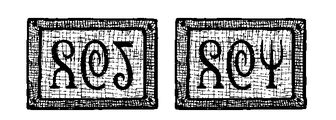
Three hundred and twenty, three hundred and twenty-one . . .
The urban heart of Bookholm was a place on the frontier between delusion and reality, a world of alchemy transmuted into architecture.
The urban heart of Bookholm was a place on the frontier between delusion and reality, a world of alchemy transmuted into architecture.
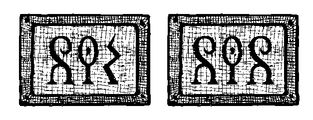
Three hundred and thirty-two . . . Three hundred and thirty-three
! I came to a halt. I had at last reached the address I was looking for - 333 Darkman Street - and was standing outside Pfistomel Smyke’s bookshop.
! I came to a halt. I had at last reached the address I was looking for - 333 Darkman Street - and was standing outside Pfistomel Smyke’s bookshop.
But what a disappointment! The building was probably the smallest I had so far seen in Bookholm. More of a witch’s cottage than a genuine antiquarian bookshop, it was hemmed in by two blackened ruins whose sole remaining occupants, I suspected, were bats. Its only remarkable feature was that it was still standing after so many centuries. For No. 333 Darkman Street must have been many centuries old. The half-timbering, which seemed to have grown into position naturally, had never been planed or stripped of its bark - one of the characteristic features of early Bookholmian architecture. The bent and misshapen timbers meandered through the masonry, the wood was petrified and black as charcoal. The courses of stones between the timbers had apparently been laid without mortar, a technique no longer practised today. Granite and marble, tiny pebbles and fragments of pumice, iron ore, semi-precious stones, topazes and opals, quartz and feldspar - all had been so carefully selected, neatly trimmed and skilfully fitted together that none of them was in the wrong place and each supported its immediate neighbours. Mortar would have become friable over the years, causing the house to collapse long ago, but this early method of construction had triumphed over the march of time. Feeling ashamed of my overhasty verdict on the house, I looked at it rather more closely. It was indeed a work of art, a three-dimensional mosaic constructed with microscopic precision. I discovered that the little stones had even smaller stones between them, and so on and so forth until the tiniest were the size of grains of rice - and all assembled firmly enough to withstand the passage of millennia. I bowed my stupid head in profound respect. That was how timeless art was created, I thought. That was how one ought to be able to write.
Other books
Iza's Ballad by Magda Szabo, George Szirtes
To Love a Soldier by Sophie Monroe
The Invisible Hero by Elizabeth Fensham
A Spider on the Stairs by Cassandra Chan
Bear by Ellen Miles
Vintage PKD by Philip K. Dick
The Magic of Saida by M. G. Vassanji
Timeless by Thacker, Shelly
Diary of the Displaced by Glynn James
An Accidental Seduction by Lois Greiman
